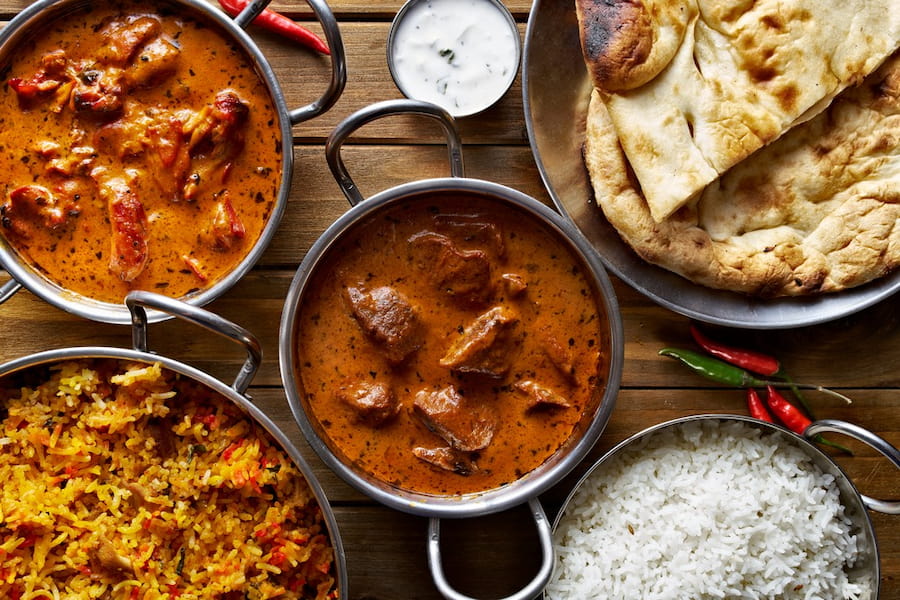The base for a plethora of recipes, Authentic Masala Paste is the essence of many colourful and savoury Indian cuisines. The thoughtful selection of ingredients and spices contributes to the dish’s complexity and richness. Although there are many different recipes for authentic masala paste, using certain components may substantially boost its spiciness and give your dishes more depth & intensity. The following six components can intensify the spiciness of your masala paste:
Red Chilli Peppers:
These are crucial for adding a kick of heat to masala paste. Capsaicin, a substance present in varied amounts in many kinds of chilli peppers, is responsible for its intense heat. To add a lot of heat to the mixture, you may add chilli powder or entire dried red chillies. Kashmiri red chillies are a common option for adding an intense colour without going overboard with spice because of their vivid red colour and mild heat.
Black Peppercorns:
Frequently disregarded for their intensity, black peppercorns provide masala paste with a strong, sharp spice. Freshly ground black pepper enhances other spices with its earthy, biting heat. Adding whole black peppercorns or freshly ground pepper boosts the spice content of the paste without overpowering its other flavours.
Ginger:
The citrusy, peppery heat of fresh ginger root amplifies the masala paste’s general spicy flavour. Its spicy, toasty flavour profile gives it more nuance and richness. Ginger has a spicy essence which may be extracted by grating or finely chopping it, giving the paste a mild, lasting heat which accentuates the other spices.
Garlic:
Garlic gives masala paste a mild spicy flavour in addition to its unique scent. Garlic produces allicin whenever it is crushed or minced; this component gives garlic its strong flavour and hint of spice. Garlic adds layers of flavour and improves the general spice profile of your masala paste.
Mustard Seeds:
The distinctive and potent spice of mustard seeds, especially brown or black mustard seeds, is used to masala paste. These seeds produce a sour, biting flavour with a long-lasting heat when roasted in oil. To get the most amount of flavour and intensity from the mustard seeds, temper them in hot oil before putting them in the mixture.
Green Chilies:
Known for their lively, fresh spice, green chillies are a common ingredient in Indian cuisine. Some are spicier than others, some of them being quite hot. Adding chopped or pureed green chillies gives the masala paste a vibrant, burst of spice right away. Adapt the amount to the heat levels that you desire.
Bonus Ingredients:
Cayenne Pepper:
Made from powdered and dried red chilli peppers, cayenne pepper is a strong spice which can kick up the heat in masala paste. Because of the capsaicin that gives it its flaming nature, it is a common choice for boosting the level of spice in a variety of cuisines. For an instant and powerful spice increase, mix in a pinch or more of cayenne pepper into the mixture.
Sichuan Peppercorns:
These peppercorns are indigenous to China and provide a tingling feel that is reminiscent of citrus. Crushed Sichuan peppercorns aren’t often utilized in Indian cooking, but they can offer a fascinating and numbing flavour to masala paste which goes well with other spicy ingredients.
Dried Fenugreek Leaves (Kasuri Methi):
Dried fenugreek leaves give masala paste a faintly spicy and somewhat bitter flavour. The entire flavour profile is enhanced by the release of a subtle heat & a rich scent from crushed kasuri methi. To make the dried leaves spicier, toast them before incorporating them into the paste.
Turmeric:
This spice gives the masala paste a little kick of heat in addition to its striking hue and earthy flavour. Not only does turmeric add aesthetic attractiveness, but it also adds a mild heat which balances the dish’s overall mild spice.
Hot Paprika:
Ground hot chilli peppers are used to make hot paprika, which gives masala paste a deep, smokey flavour and a spicy kick. The degree of spice could differ, so modify the amount to suit your preferred level of heat. The depth of flavour and ultimate level of spice is increased when hot paprika is combined with other spices.
Coriander Seeds:
When pulverised and toasted, coriander seeds give a spicy, mildly lemony flavour. They contribute their distinct flavour character and depth to the masala paste, counteracting the heat from other ingredients.
You can adjust the degree of heat in the masala paste through the combination of these hot components in different proportions. Recall that the level of spice may be altered by varying the amount of these components or by combining a combination of gentler and hotter types. The secret to making a hot masala paste is to carefully balance these spices such that the heat complements the dish’s flavour profile rather than overwhelming it. You can find the ideal combination which pleases your palate by experimenting with these elements.
Final Words
If you add red chilli peppers, black peppercorns, ginger, garlic, mustard seeds, as well as green chillies to your masala paste, it will become spicier along with turn even regular meals into mouthwatering meals. Savour the richness and variety of these ingredients as you set out on your delectable adventure with hot masala pastes.
If you like my article kindly subscribe to my daily letter and visit gelbooru for more interesting articles.
